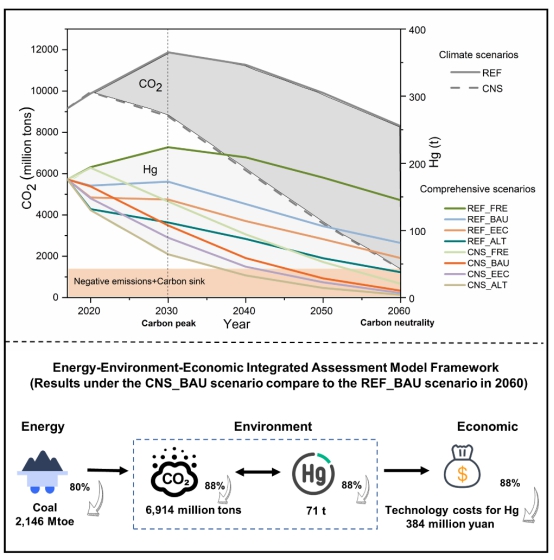The Weihai Institute for Interdisciplinary Research has made significant progress in understanding the synergistic impact of carbon neutrality policies and the Minamata Convention on Mercury. The research titled "Carbon Neutrality and Clean Air Acts Can Enable China to Meet the Minamata Convention Goals with Substantial Cost Savings" has been published in One Earth, a sister journal of Cell. Ph.D. student Yujie Pan from Peking University is the first author, with Professor Jiashuo Li from Shandong University and Associate Professor Yang Xie from Beihang University as co-corresponding authors.
China faces the concurrent challenges of carbon dioxide (CO2) and toxic mercury (Hg) emissions from coal combustion, with implications for environmental and human health. To address these problems, China has implemented carbon neutrality targets and air pollution controls and signed the Minamata Convention. However, how to best leverage these measures for optimal outcomes (i.e., effectively reduce emissions and pollution with the least cost) remains elusive. This study examined the best -practice portfolio of climate, air pollution, and Hg reduction policies via an energy-environment-economic integrated assessment model. The findings suggest that the most cost-effective solution to simultaneously address these issues is coupling carbon neutrality strategies with clean air policies, which can further save 384 million Chinese yuan (CNY) in Hg abatement in 2060. Furthermore, carbon neutrality measures alone can achieve near-zero Hg emissions, whereas Hg policies will only achieve about one-third of the carbon neutrality target. These findings provide practical lessons to cost-effectively address multiple climate and pollution issues, especially for emerging economies that face similar challenges.

Figure 1: Graphical Abstract

Figure 2: Synergistic Benefits and Mercury Emission Reduction Technology Costs in 2060
This study was supported by the National Natural Science Foundation of China (NSFC), the National Key Research and Development Program of the Ministry of Science and Technology of China, and the National Office for Philosophy and Social Science of China.
Original article link: https://doi.org/10.1016/j.oneear.2024.02.006
6/j.oneear.2024.02.006
